Bright young things: 'Les Heures Claires de la Villa Savoye' by Jean-Philippe Delhomme & Jean-Marc Savoye

'Les Heures Claires' is a phrase meaning the 'bright hours', and was a fitting nickname for one of the icons of twentieth century architecture - a house designed for light, space and efficiency. It's also the title of a new book, an illustrated re-imagining of the commissioning, design, construction and occupation of the Villa Savoye by its original clients, Pierre and Eugénie Savoye. Created by the clients' grandson, Jean-Marc Savoye, in collaboration with the painter and illustrator Jean-Philippe Delhomme, Les Heures Claires blends archive material with personal recollection and new illustrations.
The Savoyes endured a troubled relationship with Le Corbusier, not least because of spiralling budgets and technical challenges. They eventually moved into the house in 1931, three years after the initial commission, only to leave again in 1940, after which occupation and desecration almost destroyed the building. It wasn't until 1997 that it stood pristine once again.
Despite its familiarity, there are barely any photographs of the original owners using the house as the architect intended. This is where Delhomme steps in. With his characteristic fluid line and vivid colours, he depicts the trials and tribulations of the client, house and architects.
Delhomme has an eye for architecture. He works from a beautiful atelier on the iconic rue Campagne-Premiere, a Parisian street known for being the home of a plethora of artists over the years, including Yves Klein, Marcel Duchamp and the poet Rainer Maria Rilke, as well as being a location for Jean-Luc Godard's À Bout De Souffle. In fact the building on No 9, where Delhomme's studio is located, has its own story to tell, having been built as a group of painters' ateliers in the early 1900s by local architect Taberle, using materials from the Paris Expo of 1889. Having moved there 15 years ago, Delhomme has left the studio in its original state as much as possible, respectful to its history and architectural character.
His work on the Villa Savoye was approached with the same sensitiviy. An upcoming exhibition on Le Corbusier at the Centre Georges Pompidou is sure to spark some interest, especially in the more human dimension showcased here.
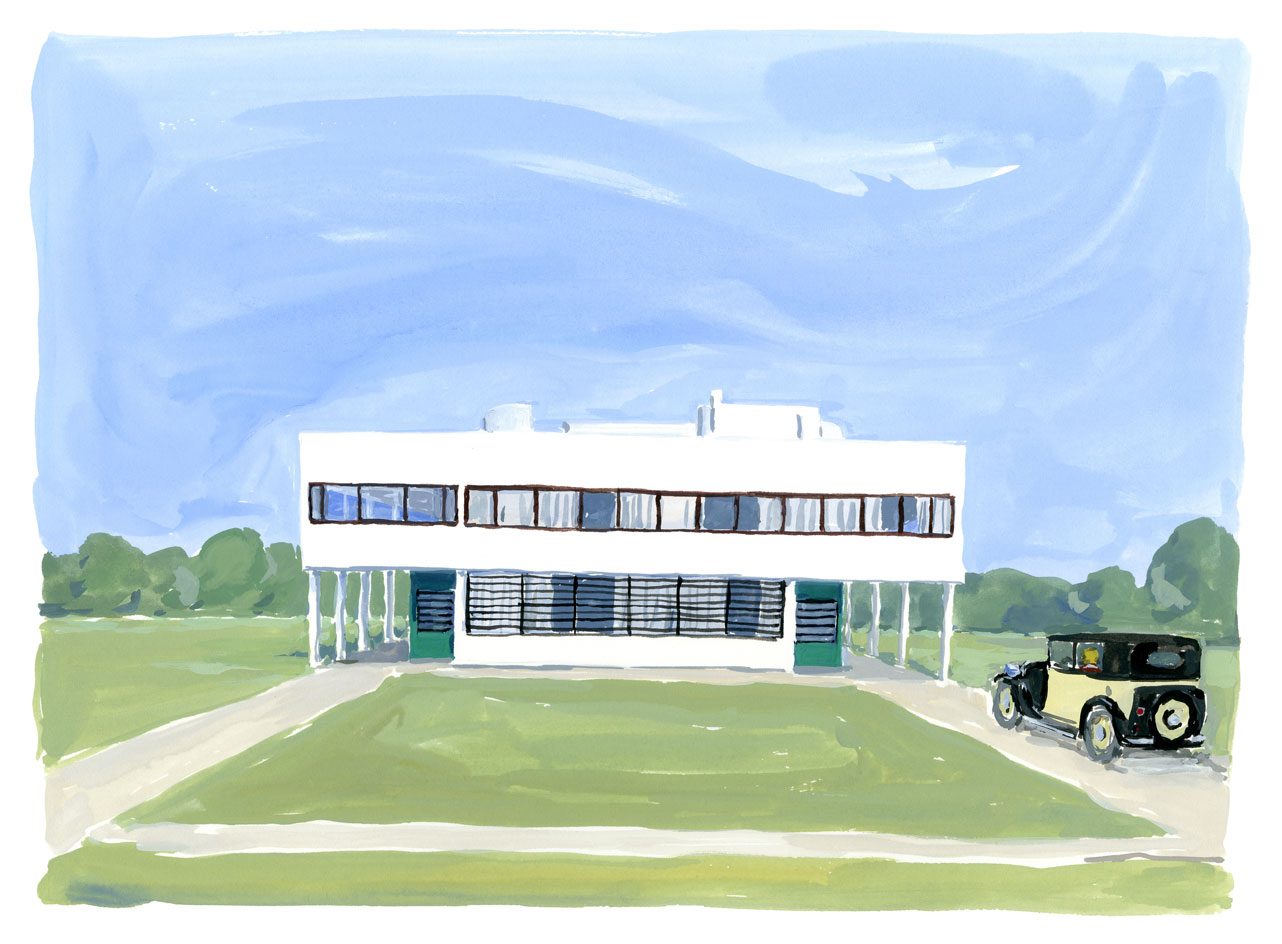
The illustrator's latest book celebrates an icon of modernist architecture, Le Corbusier's La Villa Savoye, which tracks the story and development of one the architect's most famous works.
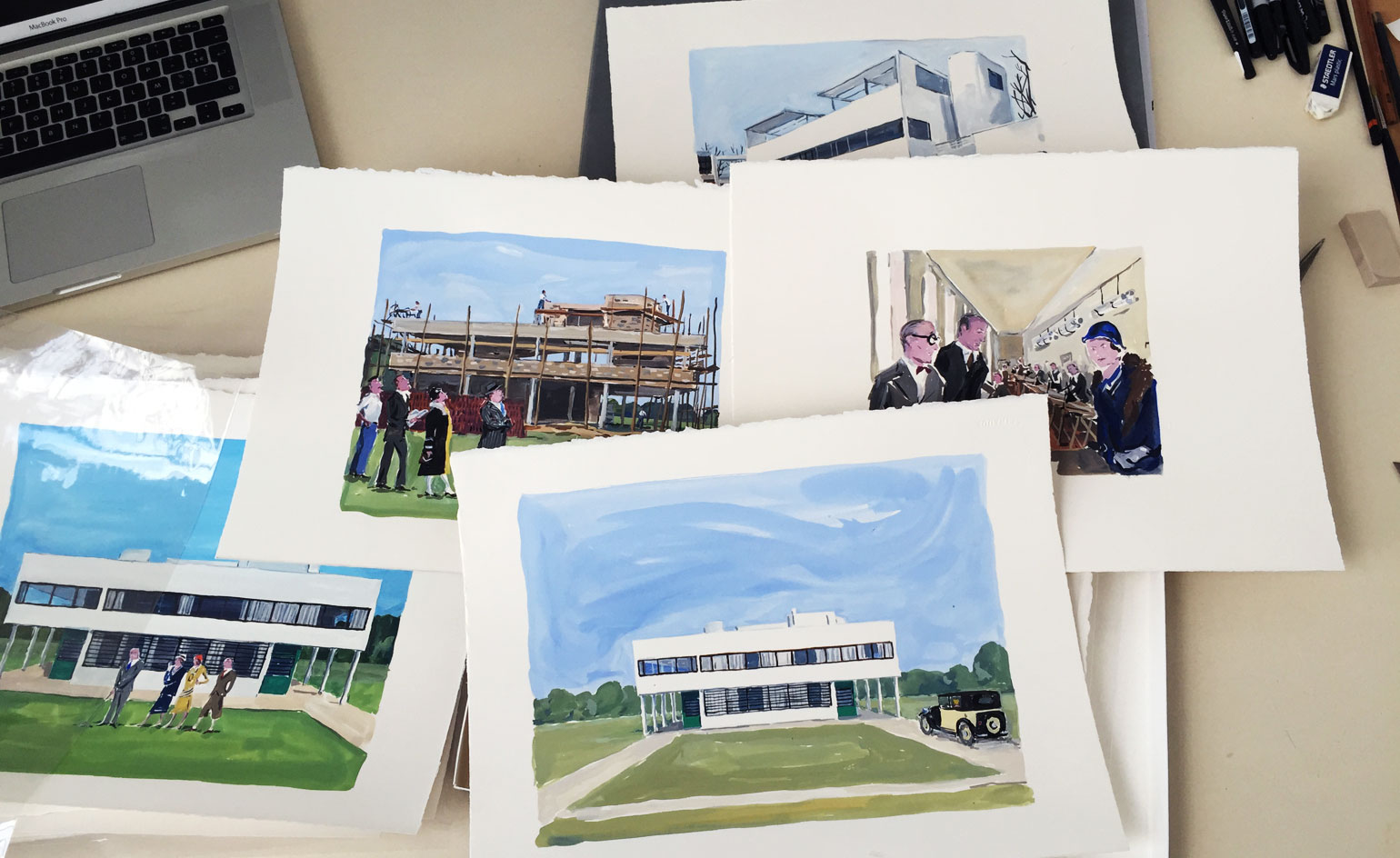
A number of the book's original artworks in situ.

The book comes out of a collaboration with the grandson of Le Corbusier's clients, Jean-Marc Savoye, who has written the text.

Finished paintings amidst the paraphernalia of the workshop.
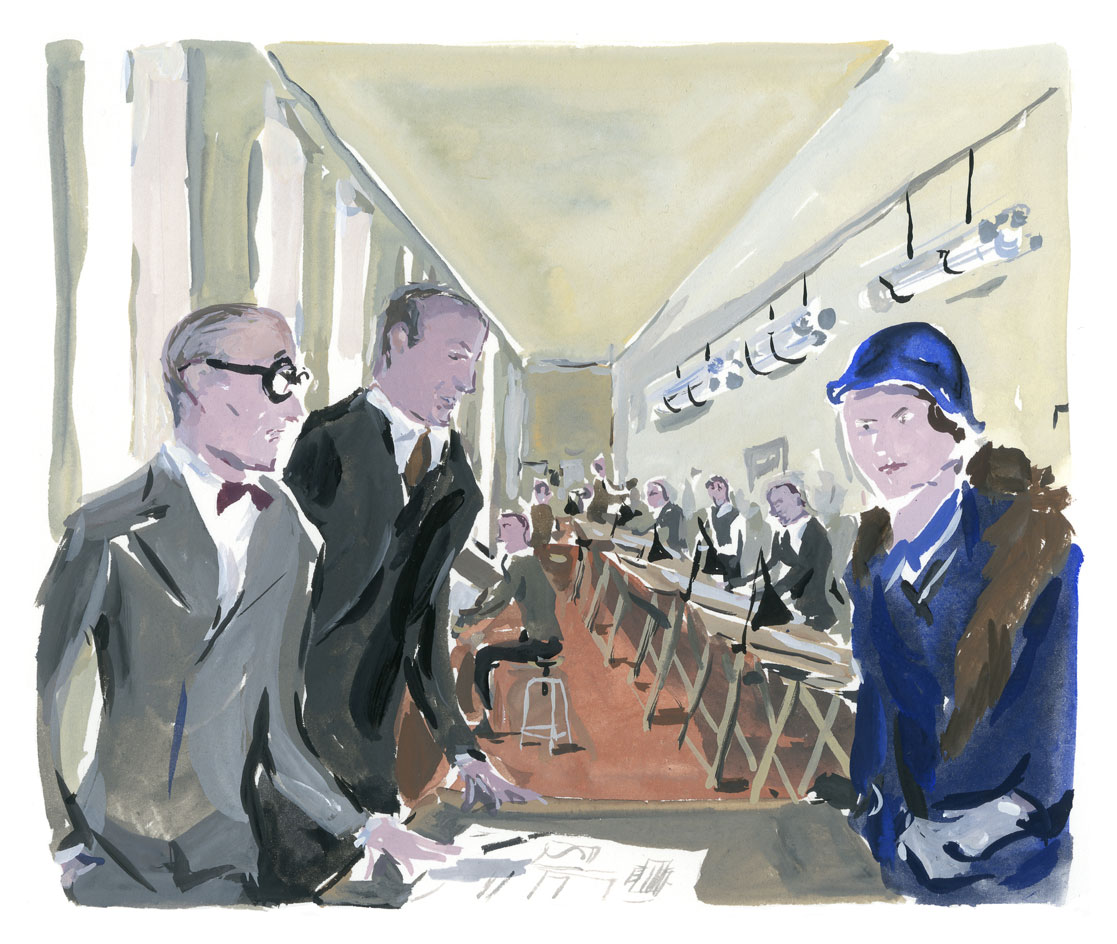
There is a surprising dearth of photographs of the original owners using the house as Le Corbusier intended, which is where Delhomme steps in. Here, the Savoyes meet with Le Corbusier in his studio.
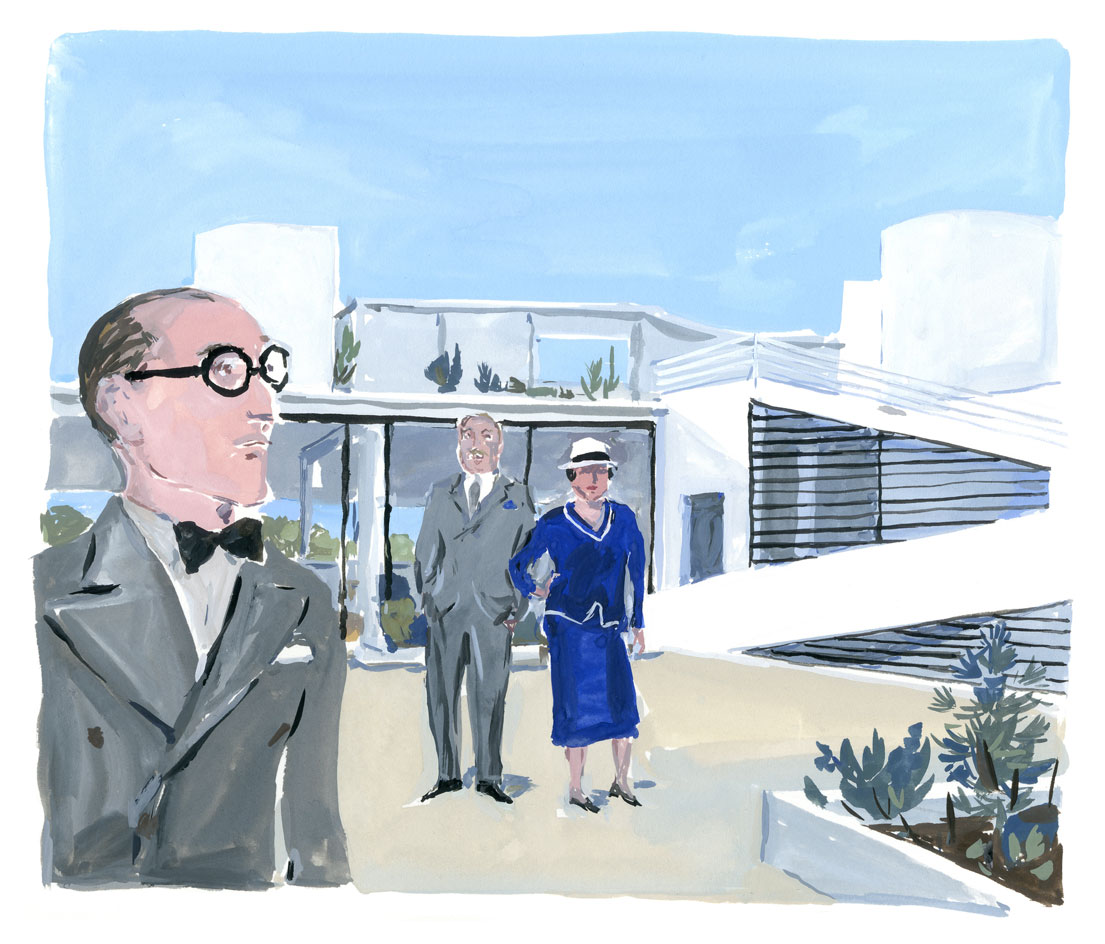
Detailing the trials and tribulations of both the architects and the clients, the book acts as an illustrative re-imagining of the story. Le Corbusier here shows his clients around the finished Villa.

An artist's palette: Delhomme's well-used tubes. Photography: Antonio Camera

The Savoyes endured a troubled relationship with Le Corbusier, not least because of spiralling budgets and technical challenges.

Delhomme blends archive material with Savoye's personal recollection and new illustrations. Written in the first person, Savoye's words are as much about the people as the building. It offers a view of this architectural paragon never seen before.

An illustration of the ground floor, the proportions of which were famously based on the turning circle of the Savoyes' 1927 Citroën.

The Savoyes eventually moved into the house in 1931, three years after the initial commission, only to leave again in 1940.
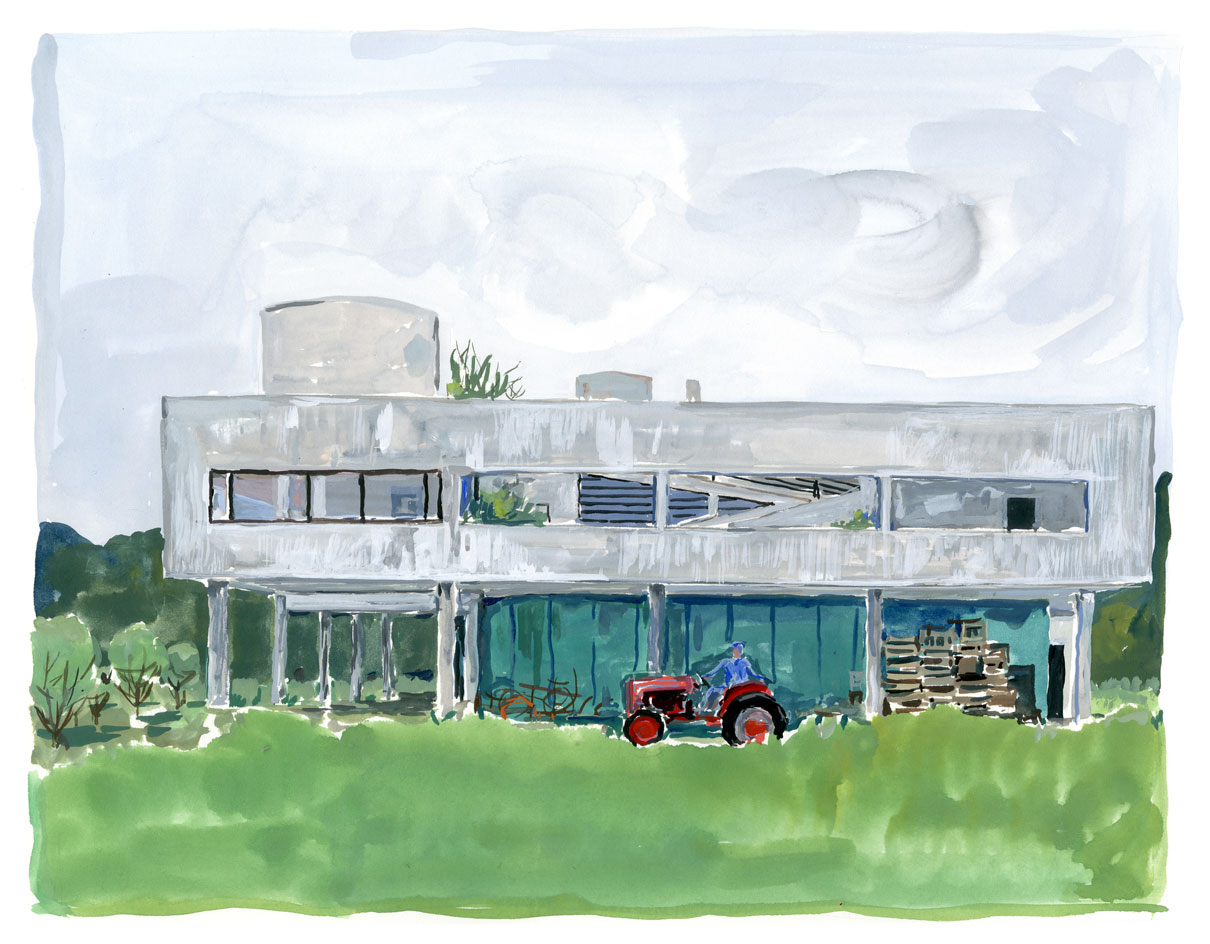
Following this, occcupation and desecration almost destroyed the Villa - a story the book also charts.

Tourists snap their way around the house, which was restored to its former glory in 1997.
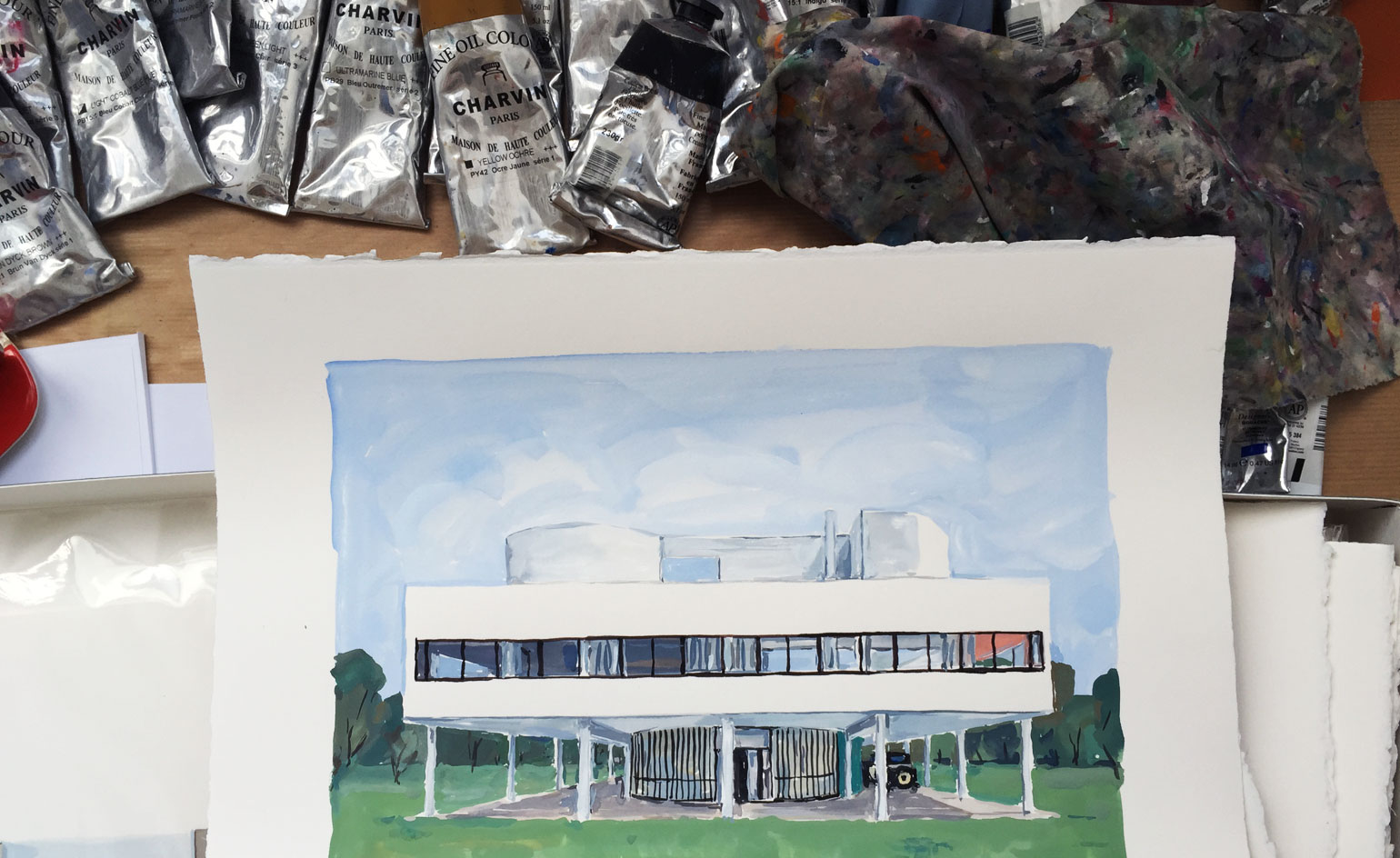
Once finished, Delhomme's renderings in his trademark fluid line, seem quite at odds with the spatters of a studio.
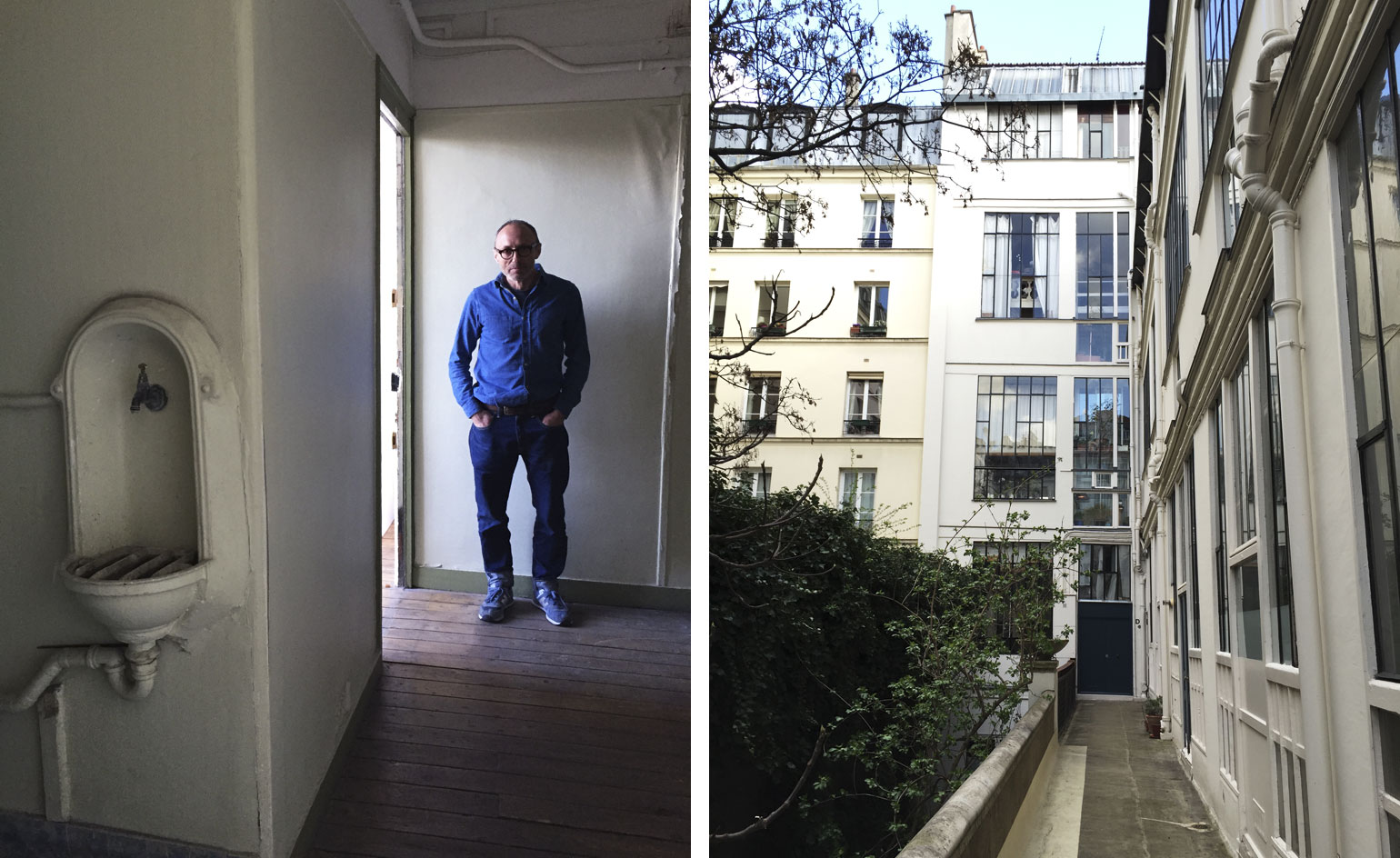
Delhomme works from a maisonette atelier in Paris' Montparnasse. The studio - with desk to ceiling windows - is flooded with natural light which filters into the vibrant sky blues and grass greens of Delhomme's work.
Receive our daily digest of inspiration, escapism and design stories from around the world direct to your inbox.
Jonathan Bell has written for Wallpaper* magazine since 1999, covering everything from architecture and transport design to books, tech and graphic design. He is now the magazine’s Transport and Technology Editor. Jonathan has written and edited 15 books, including Concept Car Design, 21st Century House, and The New Modern House. He is also the host of Wallpaper’s first podcast.
-
 This cult Los Angeles pop-up restaurant now has a permanent address
This cult Los Angeles pop-up restaurant now has a permanent addressChef Brian Baik’s Corridor 109 makes its permanent debut in Melrose Hill. No surprise, it's now one of the hardest tables in town to book
-
 French bistro restaurant Maset channels the ease of the Mediterranean in London
French bistro restaurant Maset channels the ease of the Mediterranean in LondonThis Marylebone restaurant is shaped by the coastal flavours, materials and rhythms of southern France
-
 How ethical is Google Street View, asks Jon Rafman in Copenhagen
How ethical is Google Street View, asks Jon Rafman in CopenhagenIn 'Report a Concern - the Nine Eyes Archives' at Louisiana Museum of Art, Copenhagen, Jon Rafman considers technology's existential implications
-
 David Kohn’s first book, ‘Stages’, is unpredictable, experimental and informative
David Kohn’s first book, ‘Stages’, is unpredictable, experimental and informativeThe first book on David Kohn Architects focuses on the work of the award-winning London-based practice; ‘Stages’ is an innovative monograph in 12 parts
-
 This modernist home, designed by a disciple of Le Corbusier, is on the market
This modernist home, designed by a disciple of Le Corbusier, is on the marketAndré Wogenscky was a long-time collaborator and chief assistant of Le Corbusier; he built this home, a case study for post-war modernism, in 1957
-
 Explore Tom Kundig’s unusual houses, from studios on wheels to cabins slotted into boulders
Explore Tom Kundig’s unusual houses, from studios on wheels to cabins slotted into bouldersThe American architect’s entire residential portfolio is the subject of a comprehensive new book, ‘Tom Kundig: Complete Houses’
-
 The Architecture Edit: Wallpaper’s houses of the month
The Architecture Edit: Wallpaper’s houses of the monthThis September, Wallpaper highlighted a striking mix of architecture – from iconic modernist homes newly up for sale to the dramatic transformation of a crumbling Scottish cottage. These are the projects that caught our eye
-
 An apartment is for sale within Cité Radieuse, Le Corbusier’s iconic brutalist landmark
An apartment is for sale within Cité Radieuse, Le Corbusier’s iconic brutalist landmarkOnce a radical experiment in urban living, Cité Radieuse remains a beacon of brutalist architecture. Now, a coveted duplex within its walls has come on the market
-
 A new photo book explores the symbolic beauty of the Japanese garden
A new photo book explores the symbolic beauty of the Japanese garden‘Modern Japanese Gardens’ from Thames & Hudson traces the 20th-century evolution of these serene spaces, where every element has a purpose
-
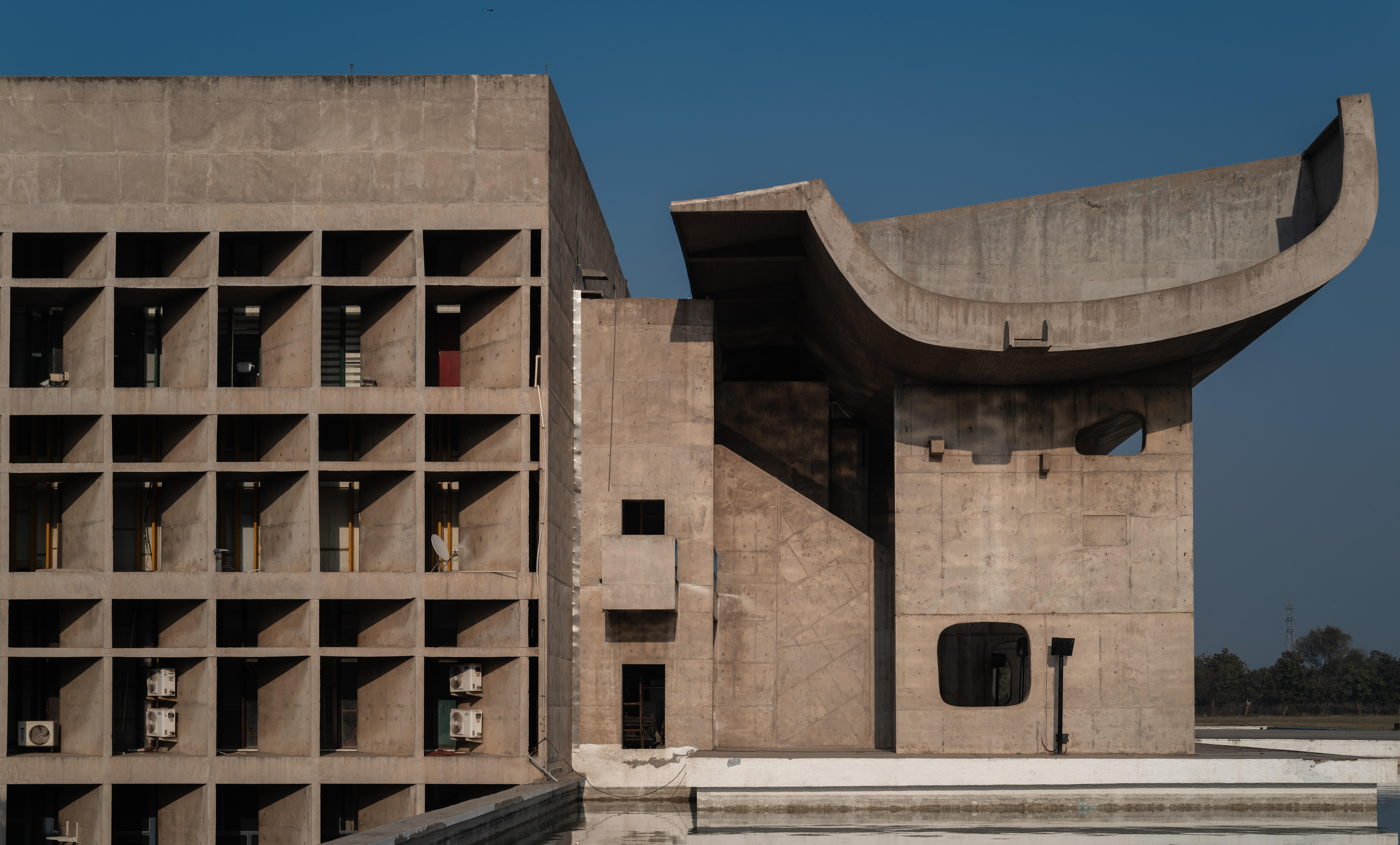 A guide to modernism’s most influential architects
A guide to modernism’s most influential architectsFrom Bauhaus and brutalism to California and midcentury, these are the architects who shaped modernist architecture in the 20th century
-
 Modernist Travel Guide: a handy companion to explore modernism across the globe
Modernist Travel Guide: a handy companion to explore modernism across the globe‘Modernist Travel Guide’, a handy new pocket-sized book for travel lovers and modernist architecture fans, comes courtesy of Wallpaper* contributor Adam Štěch and his passion for modernism